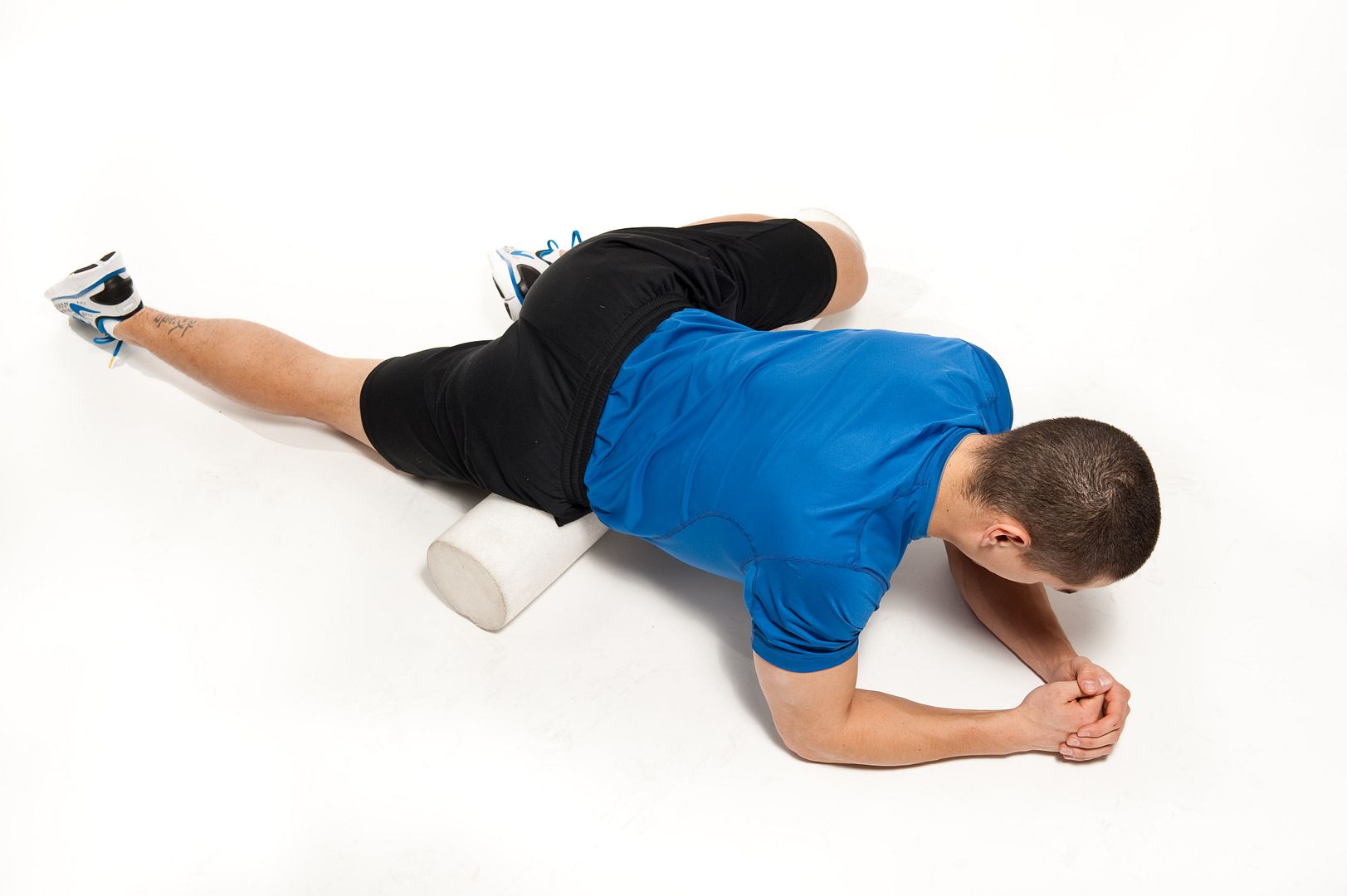Bump. Buh-bump. Buh-bump, buh-bump, BUH-BUMP.
My muscles seemed to ripple over the blue foam roller as I not so gracefully glided over it. It was no surprise to me - I've been feeling tightness in my right quad for at least a week and telling running partner Tami that I was going to roll for two. And it was three weeks ago that I got some pro tips from a strength and conditioning coach while "on assignment" for work.
It was three weeks of telling myself that, this time, I was going to be diligent about it. Three weeks of thinking and not doing, for which I was paying for it. The evidence? The tears rolling down my face.
For the uninitiated, foam rolling is a form of myofascial release. The fascia is a web-like covering surrounding the muscles, tissue and bones. Exercise can cause the fascia to become tight and lose its pliability, which can cause pain and affect flexibility and stability. Applying external pressure to the fascia (read: release) can smooth it out, reduce pain and restore range of motion.
Through work and personal experience, I've learned a few things about MFR that I wanted to share.
It's not foam rolling! Foam rolling is such a popular term but when you think about it, may forms of MFR don't involve foam at all. I have three tools - a blue foam roller, an Enso roller and a Tiger Tail. I can only use one to truly foam roll.
Am I being nit-picky? Yes but I find it limiting because there are other things you can use. A lacrosse ball, for one. It's popular in the CrossFit crowd. A more conservative option is a softball and then a tennis ball. A softball is bigger, allowing the pressure to be distributed over a greater space. It's great to use in small spots such as the back.
Don't know which to pick? Go for a grid roller. It's not as aggressive as a trigger point or Enso but its dense core makes it sturdier and more likely to stand up to repeated use.
Perfect 10. Once upon a time, I had two methods of rolling. No. 1: Go over the targeted muscle a few times until I felt the sting and then stop before the tears started. No. 2: Roll until I had no more tears left.
In case you were wondering, neither way was good. A good rule of thumb is to give each section of muscle 10 good rolls. If a spot is particularly sensitive, maintain pressure for about 30 seconds and release.
The fascia, in a way is like a knotted up rubber band. MFR undoes the knots and gives it a stretch. If you continue to roll, you continue to stretch the band. Eventually, it will lose elasticity. For athletes, this means a loss of power and force.
Planes of motion. It's easy to think of rolling the front of the leg and the back of the leg. However, the fascia continues around the side so it's important to hit all areas of the muscle group.
Example: You are rolling your calves. Up and down, up and down. The muscle flattens out against the roller, and you hit about 50 percent of it. Take a few rolls to rotate to each side and hit the outer and inner calves. If it's uncomfortable, position-wise, this target area is great for the Tiger tail. Hit the back of the leg, the side and even the front a bit - but gently.
Rotating as you roll also applies to the hips and the glute medius (side of your butt). Runners often target the IT band but make sure to go to the top of the hip and rotate in to target the flexors.
Bonus: Reader feedback. I asked for tips and questions on Facebook, and Kristy asked how to roll without the wee ones and dog thinking it's a game.
Let me tell you this: Rolling your IT band on the Enso while your 3-year-old sits on your hip ... not fun. And, sadly, my Tiger Tail has had more use as a sword than an MFR tool. That said, my advice is to give the kids their own "foam roller" and distract the dog. There are all kinds of foam shapes at the craft store, and they are very inexpensive. Pick up a few and let them decorate with markers. When you roll, you get your (unattractive, more expensive) roller and they have theirs. As for the dog, Denali mostly ignores me now but a Kong with peanut butter does wonders.
Robyn offered this tip: It's an early injury-detection (and prevention) system. FR picks up tight spots before you notice them running. I'm often surprised by what's tight or painful on the FR, and those spots occasionally develop into a running injury if I don't pay attention to them.



This post is excellent! I need to replace my foam roller with something a little firmer and you helped me with my decision! Thanks a bunch! I love your humor!
ReplyDeleteGreat post! I need to do much more of this stuff.
ReplyDeleteGreat post! I use a foam roller every night. I use the tiger tail occasionally. I get a massage every 4 weeks!! I think that it is super important. I love the way it feels. Is that too masochistic?? :)
ReplyDelete